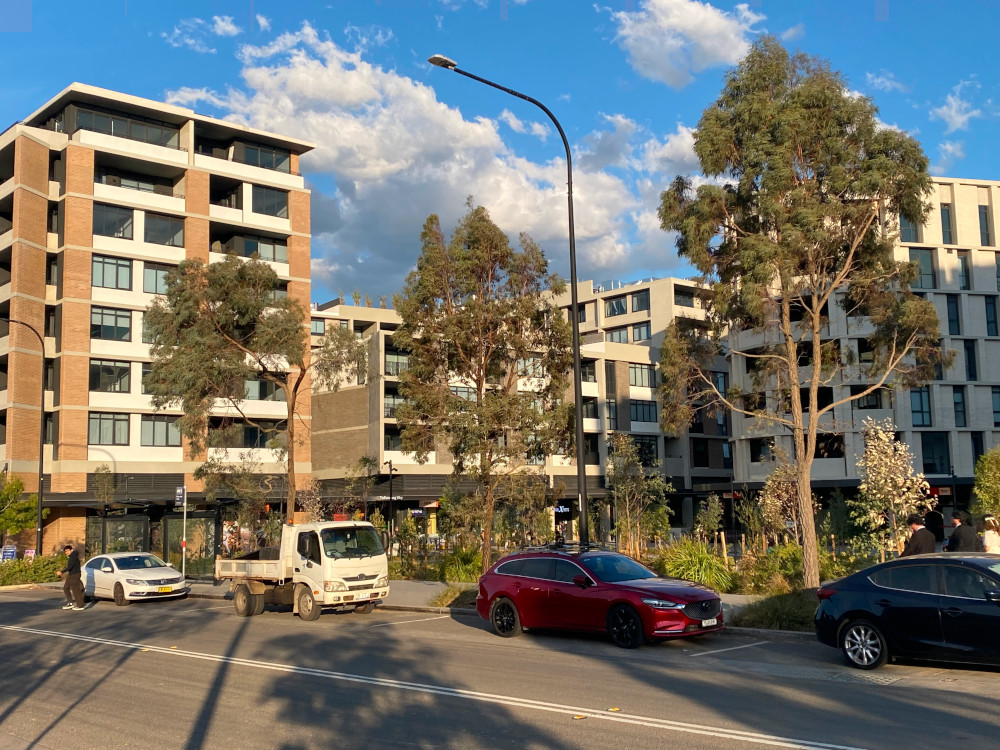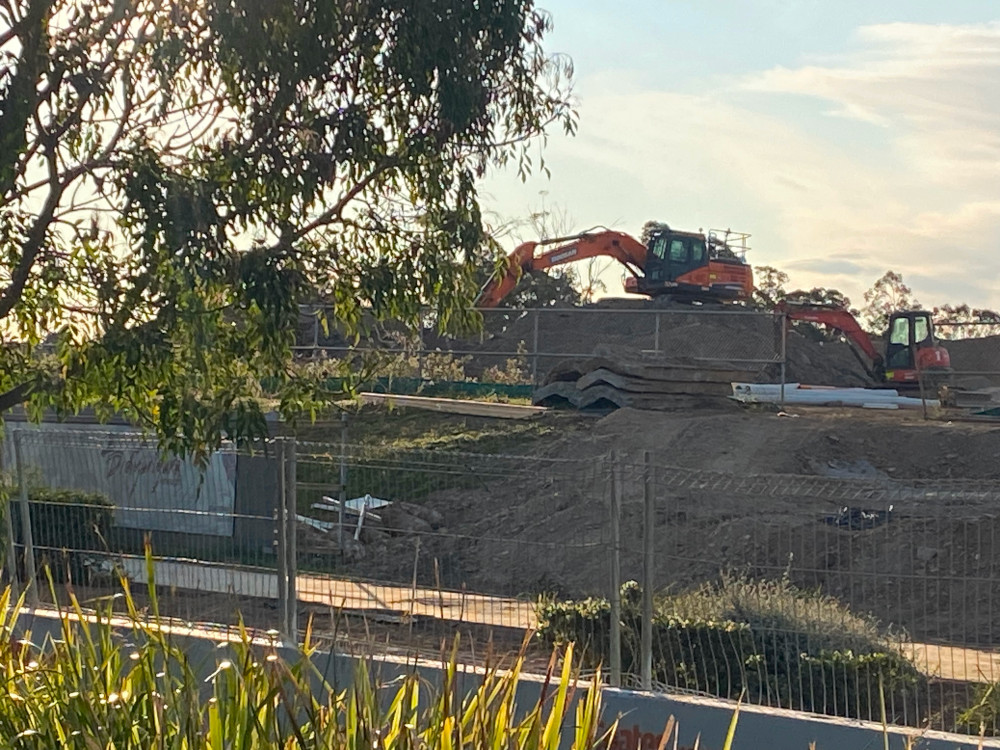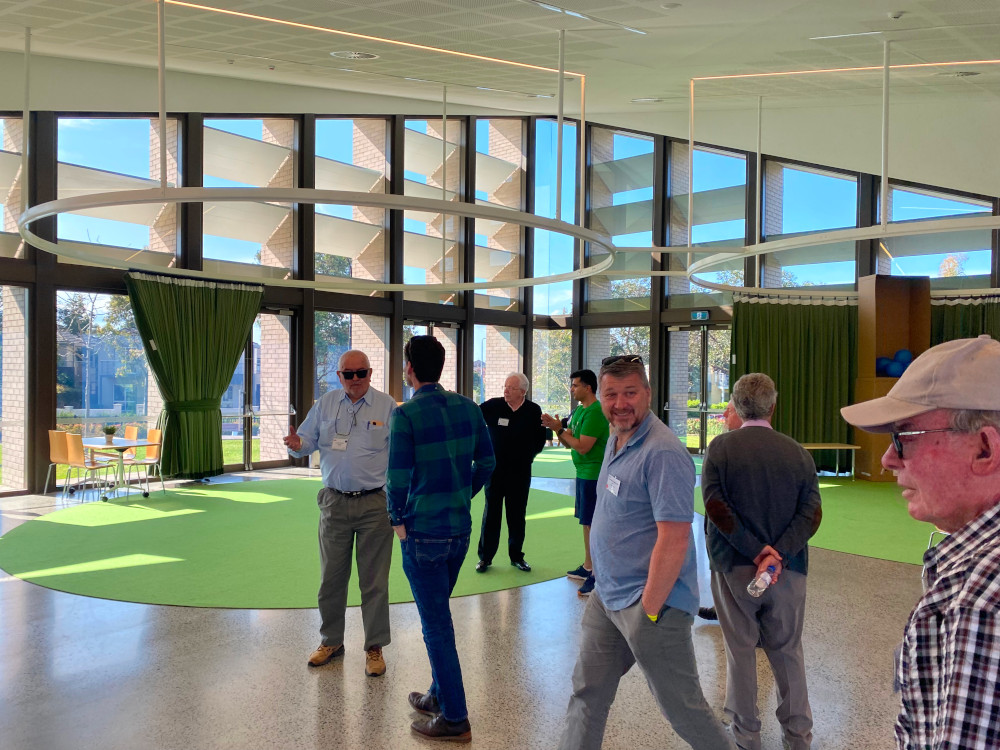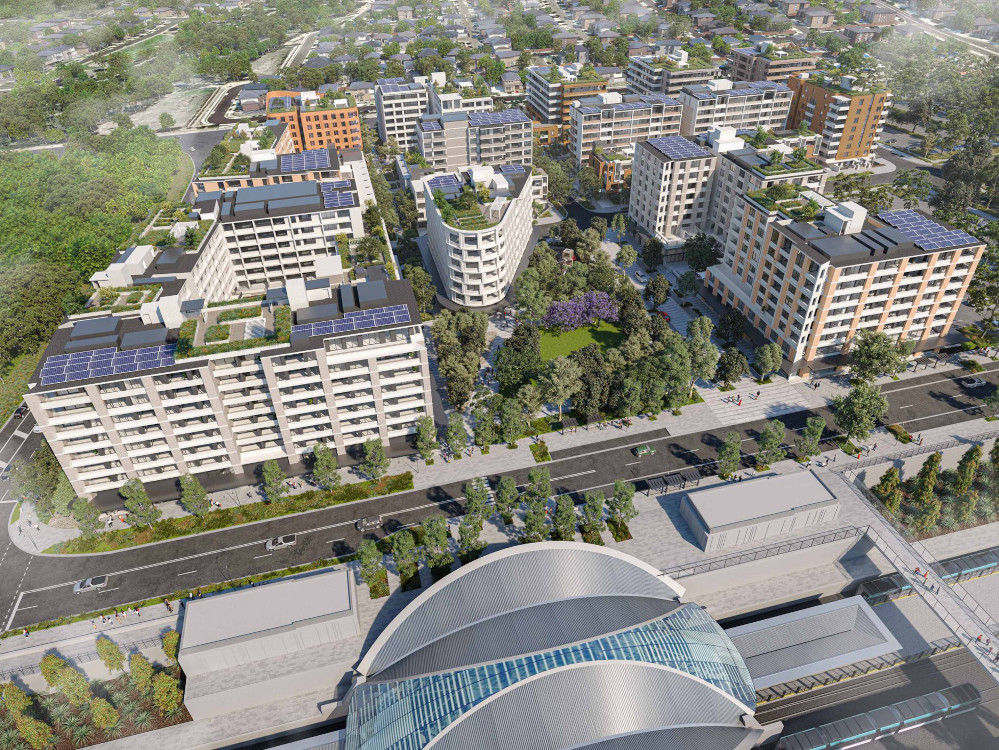The very end of Sydney’s shiny new Metro line is Tallawong station, a place destined to be a high-rise-only suburb. The sort of “Transport Oriented Development” (TOD) that strikes fear into the heart of inner city NIMBYs is here at the end of the line, ten-story flat blocks. (Question: Why are tall buildings called flat?)
But instead of transforming a low-density part of the inner city into urbanist TOD, Tallawong is going from paddock tohigh-rise almost instantly. The speed rivals China’s growth at its fastest.
Looking one way from Tallawong station, you see this over the road.

Only a few months old, an urban centre with eight-story building with shops and flats set around an open square. A new set of buildings is being finished just next to these and a further clump is down the street.

Standing on the other side of the station, the bulldozers are working on another set of flat blocks. Instant city: just add people.
I got off the metro at Tallawong for the first time to visit Rouse Hill Anglican College, about a 15-minute walk around the second photo. It is a well-established school of 1600 students with a whole lot more kids about to arrive in the district.
Car spaces will be restricted at Tallawong, with the Metro being the main mode of transport. So, the local churches, which are mostly attended by car, may not work for this instant city. This suggests that sooner or later, planting a church in Tallawong’s high-rise district is the way to go to reach Tallawongians with the gospel. (This is the opposite of the Inner West, where the next Metro line, which goes to Parramatta, will plant new stations next to existing churches at Five Dock and Concord/Burwood North, giving exciting opportunities as Transport-oriented developments come to existing churches.)
Well, that’s the story I heard about a bus tour of the North West Sydney growth area, which featured Riverstone, Schofields, Rouse Hill and Stanhope Gardens. It was part of ‘Synod in the Greenfields, ‘ which takes the Sydney Anglican Church parliament out of its city home for a day.

We visited Stanhope gardens church, which was bustling, even on Saturday.
One statistic from the bus was that to continue the vision of one church per 10,000 people, the Sydney Anglicans would need to build a church every year for the next ten years. Similar goals will exist for other Christian movements, such as Western Sydney, which is already larger than Perth and barrels ahead.
“Will you help the crowds see Jesus?” Archbishop Kanishka Raffel asked the Synod, speaking of burgeoning Western Sydney.
“The great need of Sydney is the gospel of the Lord Jesus Christ.
“I do not mean that Sydney does not have many other pressing and important needs. Our churches and our agencies are constantly engaged in responding to the real-life impact of the cost of living crisis, the housing crisis, and the wickedness of violence against women; motions and reports in our business paper range across these issues, as well as the scourge of online gambling. Our churches, schools, and agencies respond to Sydney siders’ felt and physical needs across the diocese. And I’m very thankful for all the ways in which so many seek to meet the needs of others with practical and financial assistance, the truth and comfort of God’s word in prayer, compassion, and personal support.
“But Jesus said to the paralysed man who was brought to him by his four excellent friends, ‘son, your sins are forgiven.’ In doing so, he taught that beyond our visible and felt needs are our deepest needs and only Jesus has authority to minister to what is deepest as well as what is on the surface. Our need for reconciliation with God, forgiveness, freedom from the chains of the world, the flesh and the devil. Rescue from God’s coming judgement on sin and our need for hope in this world.”
Raffel emphasised the needs of where he stood on the stage of Rouse Hill Anglican College. “We are here in the northwest growth area, comprising 120 square kilometres, 37 kilometres northwest of the Sydney CBD. It includes the parishes of Marsden Park, Quakers Hill, Riverstone, Mount Druitt, Stanhope, Kellyville, Rouse Hill, Pitt Town, and Windsor.
“Since 2000, Sydney Anglicans have been planting churches in these suburbs as they have grown in population. Kellyville in 2001, Stanhope in 2006, Rouse Hill in 2008, and we have greenfield sites in Marsden Park, Riverstone and Box Hill. Other areas in this corridor zoned for residential purposes include North Kellyville, Schofields, Tallawong, and Vineyard. Some of the places that many of us have visited just now. The population in this area is expected to grow by 10,000 people every year from now until 2031. By 2029, the three local councils in the Northwest growth area, whoever may be elected today to serve in them, are required to build four 46,000 new homes or about 9,000 every year till 2029. That’s five years away.”
Main image: Almost complete – Tallawong developer Deicorp’s vision

